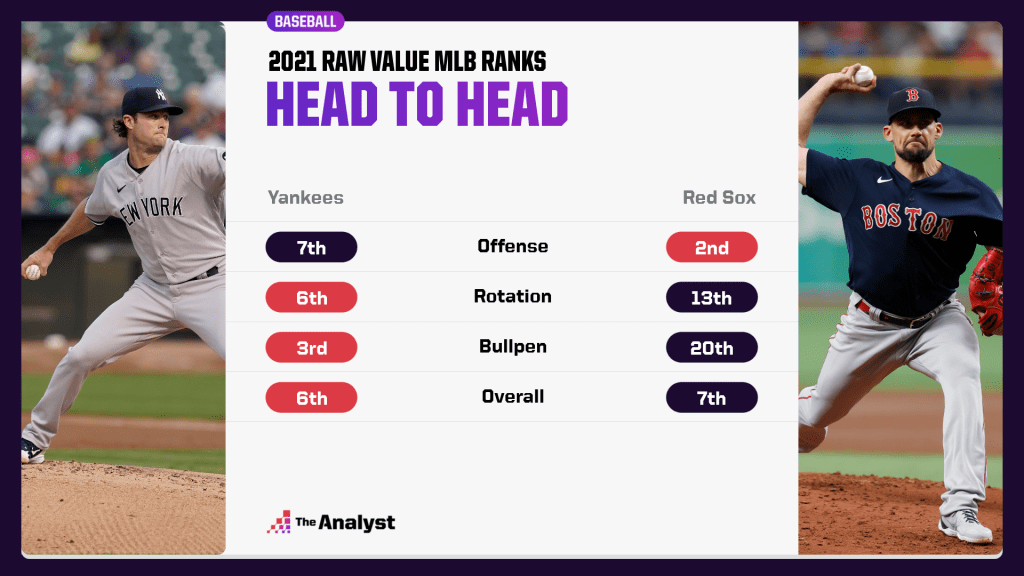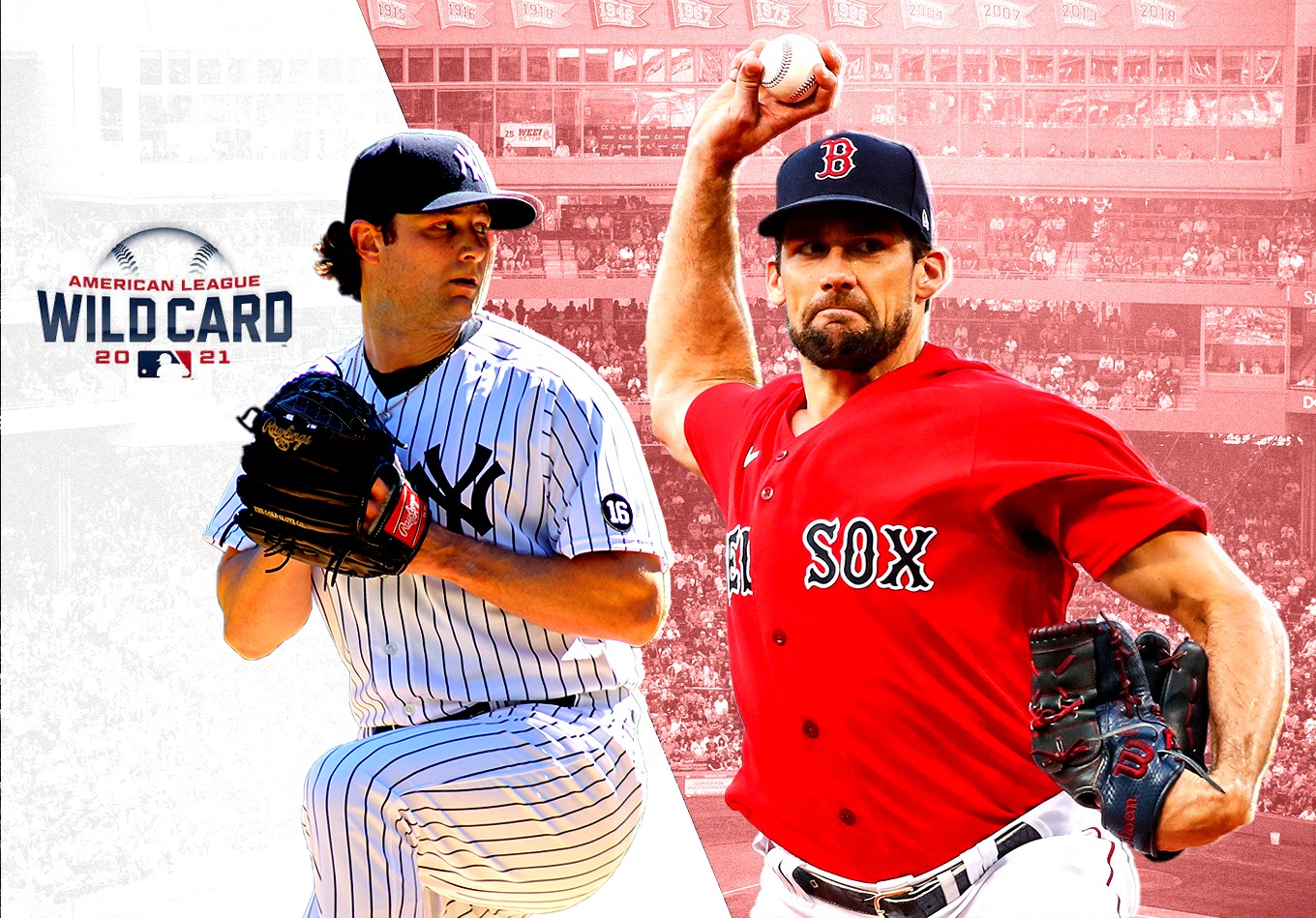For the first time in its storied history, the Yankees-Red Sox rivalry will hit center stage in a winner-take-all AL Wild-Card game Tuesday night.
New York has dropped six of the last seven playoff meetings in this series dating back to Boston’s historic comeback from a 3-0 series deficit to stun the Yankees in the 2004 ALCS. However, after losing nine of the first 12 meetings this season, the Yanks won the last six while going 37-22 overall in August and September – the second-best record in the AL over that span next to the AL East-best Tampa Bay Rays (37-20).
The Red Sox were teetering on the brink of losing their hold on a wild-card berth on Sept. 30, falling into a tie with the Seattle Mariners for the second spot following their fourth loss in five games – including a sweep at the hands of the visiting Yankees. But Boston rallied to get in by taking all three from the Washington Nationals on the final weekend of the regular season and stormed back from 5-1 down to win the finale 7-5 on Sunday.

The Red Sox earned a home date against their rivals in the postseason opener, though slipping past them won’t be easy with Gerrit Cole on the mound. An argument could be made for the right-hander as one of our pitchers of the year after he led the AL with a raw value- (RV-) of 63.1 and a strike+ of 112.0 and placed second to Robbie Ray of the Toronto Blue Jays with a whiff+ of 128.1.
Cole, however, struggled down the stretch with a 7.64 ERA over his last three outings and was a less-than-intimidating with a 4.91 ERA in four starts against the Red Sox this season.
Looking at our TVL data, which tracks the pitch type, velocity and location for each pitch and records the data into categories such as usage percentage, average velocity and the actual intent of each pitch (think command+), Cole throws his four-seam fastball 47.2% of the time – only six pitchers have thrown more four-seamers this season.
That number jumps to 51.7% against left-handed batters, which the Red Sox are likely to feature plenty tonight. And why not? Cole’s average velocity of 97.7 mph is the highest for anyone who has thrown the pitch at least 800 times this season.
But from there things change a little bit. Against Boston, the four-time All-Star has thrown slightly fewer curveballs (15.7%-14.6%) and changeups (14.1%-12.8%) but more sliders (22.2%-25.6%) than usual. It’s a good approach against Red Sox star Xander Bogaerts, who hit just .233 with a .651 OPS against right-handed sliders this season.
There’s also a change in approach against Boston lefties as well. While Cole has thrown a curveball 18.9% against lefties this year, he’s thrown them 21.6% of the time versus the Red Sox. It’s obvious from looking at the graphic below that Cole looks to bury this pitch low or low-and-in with two strikes against left-handers. He has a strike+ of 125 against lefties when he goes to the curve, which is tied with his four-seamer for the highest mark in his repertoire.

But it’s something he needs to be careful with after Alex Verdugo hit .379 with a 1.162 OPS, Travis Shaw batted .316 with a 1.192 OPS and Kyle Schwarber put up a 1.016 OPS against right-handed curves in the regular season.
Although Cole won’t have to face the injured J.D. Martinez in this matchup, he’ll have to tread lightly when Rafael Devers comes to the plate. The first-time All-Star went 4 for 11 while hitting three of his career-high 38 home runs off Cole during the regular season.
Cole will be opposed by Boston’s Nathan Eovaldi, who has a 1.61 ERA over 22.1 innings in six career postseason appearances. The right-hander, however, will be trying to remove the bad taste left in his mouth from his second-to-last start. On Sept. 24, he allowed seven runs over 2.2 innings in an 8-3 loss to the Yankees after posting a 2.01 ERA over his previous four starts against them this season.
Eovaldi ranked 12th in the majors with a RV- of 79.6, 16th with a strike+ of 106.6 and ninth with a command+ of 111.8, which means he can usually place his pitches where he wants. His approach is clear: He often works ahead with his four-seamer or curve (one of these is thrown on 74.8% of his first pitches). With two strikes, he either fires a high four-seamer (average velocity 97.0 mph) or buries an offspeed pitch (see below).

After throwing 37.1% four-seamers and a combined 40.5% curveballs/splitters over the first four meetings, Eovaldi threw 44.1% four-seamers and 25.4% curveballs/splitters in the forgettable last matchup. As a result, we could see him mix things up a little bit earlier this time around.
Eovaldi will be glad DJ LeMahieu won’t be in the lineup due to injury after the infielder went 10 for 19 with a home run and a double off him this season. He’s done a decent job overall against Aaron Judge and Giancarlo Stanton, who have combined for just three home runs in 53 at-bats lifetime in the matchup – including the 2018 postseason.
Stanton, though, has gone 7 for 12 with three homers and 10 RBIs in his last three games at Fenway.
Data modeling by Greg Gifford and Lucas Haupt. Design by Briggs Clinard.
